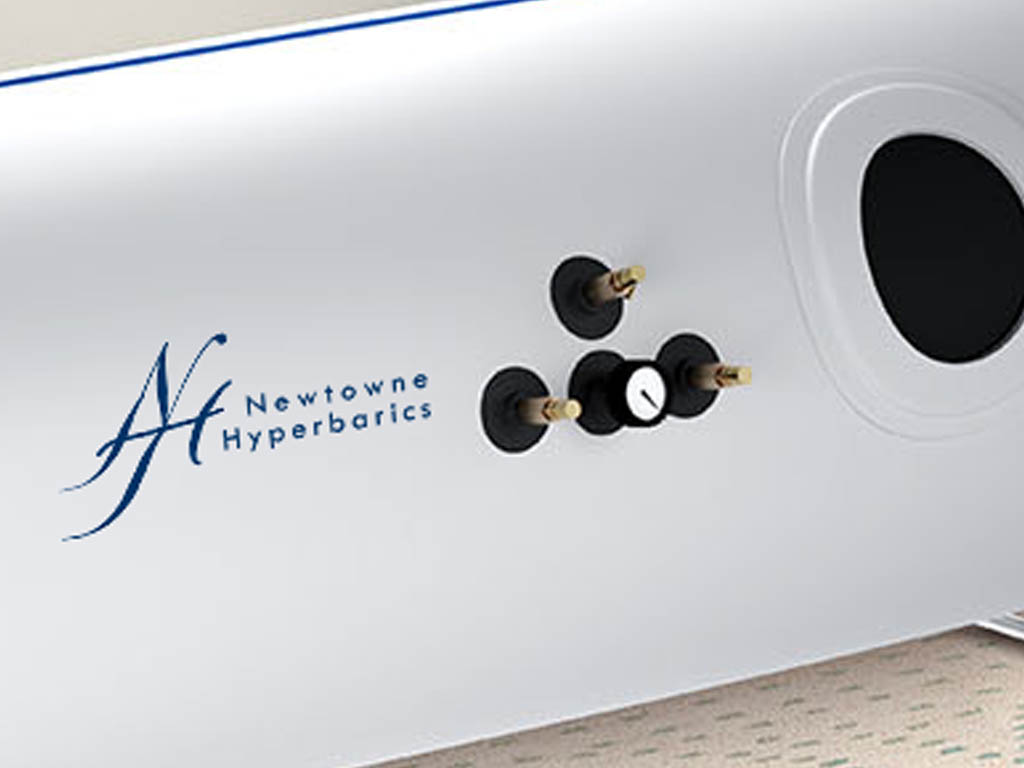This is a fascinating discussion on Cancer and oxygen. Once again it all boils down to cellular energy that has aerobic energy production substituted for anaerobic energy. Our bodies were built by o2 and meant to be run by oxygen as a fuel source. Have a look …
Increasing Cellular Oxygen Can Kill Cancerous Cells
The link between oxygen and cancer is clear. In fact, an underlying cause of cancer is usually low cellular oxygenation levels.
In newly formed cells, low levels of oxygen damage respiration enzymes so that the cells cannot produce energy using oxygen. These cells can then turn cancerous because they don’t make enough energy to function normally in the body.
In 1931 Dr. Warburg won his first Nobel Prize for proving cancer is caused by a lack of oxygen respiration in cells. He stated in an article titled “The Prime Cause and Prevention of Cancer… the cause of cancer is no longer a mystery, we know it occurs whenever any cell is denied 60% of its oxygen requirements…”
“Cancer, above all other diseases, has countless secondary causes. But, even for cancer, there is only one primary cause. Summarized in a few words, the prime cause of cancer is the replacement of the respiration of oxygen in normal body cells by a fermentation of sugar. All normal body cells meet their energy needs by respiration of oxygen, whereas cancer cells meet their energy needs in great part by fermentation. All normal body cells are thus obligate aerobes, whereas all cancer cells are partial anaerobes.”
Poor oxygenation comes from a buildup of carcinogens and other toxins within and around cells, which blocks and then damages the cellular oxygen respiration mechanism. Clumping up of red blood cells slows down the bloodstream, and restricts flow into capillaries. This also causes poor oxygenation. Even lack of the proper building blocks for cell walls, Omega 3 essential fatty acids, restricts oxygen exchange.
Warburg and other scientists found that the respiratory enzymes in cells, which make energy aerobically using oxygen, die when cellular oxygen levels drop to.
When the mitochondrial enzymes get destroyed, their host cell can no longer produce all its energy using oxygen. So, if the cell is to live, it must, to some degree, ferment sugar to produce energy. For a short period of time, like when running a race, this anaerobic fermentation of sugar is okay. Your legs build up lactic acid from this fermentation process and burn, and you stop running. Then your cells recover and produce energy using oxygen. However, the problem comes when your cells cannot produce energy using oxygen because of this damage to the respiratory enzymes. Then they must produce energy primarily by fermentation most of the time. This is what can cause a cell to turn cancerous.
According to Warburg, cells that produce energy by fermenting sugars may turn cancerous. Warburg’s contention is this…
The cells that cannot produce energy aerobically, cannot produce enough energy to maintain their ability to function properly. So they lose their ability to do whatever they need to do in the body.
Fermentation allows these cells to survive, but they can no longer perform any functions in the body or communicate effectively with the body. Consequently, these cells can only multiply and grow. And may become cancerous. Or perhaps it would be more accurate to say, they degrade into cancer cells that no longer serve your body, but live to survive…
Decades ago, two researchers at the National Cancer Institute, Dean Burn and Mark Woods, (Dean translated some of Warburg’s speeches) conducted a series of experiments where they measured the fermentation rate of cancers that grew at different speeds. What they found supported Dr. Warburg’s theory.
The cancers with the highest growth rates had the highest fermentation rates. The slower cancer grew, the less it used fermentation to produce energy.
Naturally, Warburg’s contention about oxygen and cancer was challenged and tested by other scientists.
Some researchers claimed his theory was not valid after they had measured a particularly slow-growing cancer, and found no fermentation at all. And if cancer could grow with no fermentation, then fermentation, or lack of oxygen respiration, was not the cause of cancer. Dean Burn and Mark Woods checked those results.
Using more sophisticated equipment, they determined that the equipment these researchers used to measure fermentation levels was not accurate enough to detect fermentation at low levels. Their testing, using newer and more accurate equipment, showed that even in those very slow growing cancer cells, fermentation was still taking place, at very low levels.
Pietro Gullino, also at the National Cancer Institute, devised a test that showed that this slow-growing cancer always produced fermentation lactic acid. Silvio Fiala, a biochemist from the University of Southern California, also confirmed that this slow-growing cancer produced lactic acid and that its oxygen respiration was reduced.
Further research into Warburg’s theory showed that when oxygen levels were turned down, cells began to produce energy anaerobically. They ultimately became cancerous when levels went low enough. It took a reduction of 35% in oxygen levels for this to happen.
J. B. Kizer, a biochemist and physicist at Gungnir Research in Portsmith, Ohio explains, “Since Warburg’s discovery, this difference in respiration has remained the most fundamental (and some say, only) physiological difference consistently found between normal and cancer cells. Using cell culture studies, I decided to examine the differential responses of normal and cancer cells to changes in the oxygen environment.
“The results that I found were rather remarkable. I found that… “High 02 tensions were lethal to cancer tissue, 95 percent being very toxic, whereas in general, normal tissues were not harmed by high oxygen tensions. Indeed, some normal tissues were found to require high 02 tensions. It does seem to demonstrate the possibility that if the 02 tensions in cancer tissues can be elevated, then the cancer tissue may be able to be killed selectively, as it seems that the cancer cells are incapable of handling the 02 in a high 02 environment.”
Low oxygen levels in cells may be a fundamental cause of cancer. There are several reasons cells become poorly oxygenated. An overload of toxins clogging up the cells, poor quality cell walls that don’t allow nutrients into the cells, the lack of nutrients needed for respiration, poor circulation, and perhaps even low levels of oxygen in the air we breathe.
Cancer cells produce excess lactic acid as they ferment energy. Lactic acid is toxic and tends to prevent the transport of oxygen into neighboring normal cells. Over time as these cells replicate, cancer may spread if not destroyed by the immune system.
There is more to this picture than Otto Warburg understood. It turns out that approximately 85% of cancer cells use this glucose fermentation. Other cancer cells do burn oxygen for fuel. And these cells have a very interesting interaction with the cells using glucose fermentation.
Over the last few years, researchers have identified a more sophisticated and accurate description of cancer cell metabolism. It is true that a majority of cells fit into this model of burning glucose to produce energy.
The Latest Research Shows…
that many cancer cells could be burning oxygen for energy, which is vastly more efficient at producing energy, but they aren’t. Researchers pieced together the key to this puzzle. It is very interesting.
Cancer cells don’t need a lot of energy to function, and there is plenty of energy sources available to them. What they do need is a large supply of nutrients necessary to grow and proliferate. Burning oxygen produces a lot of energy, and not much in the way of nutrients to fuel growth. Burning glucose produces little energy, but a lot of nutrients to fuel growth and proliferation.
So it may be that the fastest growing cancer cells utilize glucose fermentation to produce energy because it produces so much more of what they need, nutrients that enable them to grow fast and proliferate more rapidly.
This makes sense. Decades ago, Dean Burns and Mark Woods found that the fastest growing cancer cells had the most glucose fermentation, and the slowest growing cancer cells had the least amount of glucose fermentation.
In addition, over the past few years, researchers have noted that some cancer cells burn lactase (lactic acid) and even fat ketones as additional energy sources. Lactic acid is readily available in tumors as most cancer cells are burning glucose for energy and producing lactic acid as a byproduct of that process.
They pump out the lactic acid to get rid of it so that it doesn’t overwhelm and destroy them. Other cancer cells in the tumor that are producing energy primarily with oxygen and less with glucose, uptake this lactase, according to researchers, and metabolize it for energy. By doing so, they use less glucose which enables glucose-dependent cancer cells to have more to consume.
In order to create more nutrients as a byproduct of cell metabolism, cancer cells also metabolize glutamine. It is also not an efficient source of energy to run the cell, but it supplies valuable nutrients needed by the cancer cells to grow and proliferate.
Shutting Down Cancer Cell Metabolism
Clearly, the key to fighting cancer is to shut down as many of the metabolic processes as possible in cancer cells. Stopping both their production of energy and the more limiting factor, their processing and production of nutrients needed to support the growth of cancer cells and their rapid replication.












